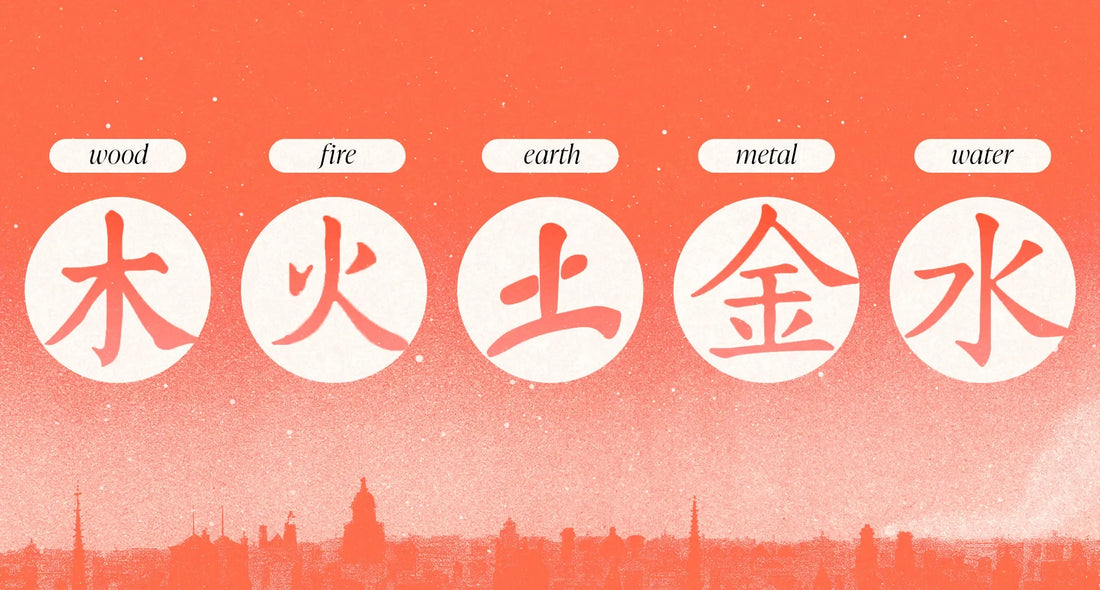The ancient wisdom of the Five Elements—Earth, Fire, Water, Wood, and Metal—offers a powerful framework for achieving balance in mind, body, and spirit. Rooted in traditional Chinese medicine, these elements shape our well-being by influencing our diet, emotions, and daily routines. By understanding how to work with these forces, we can create a lifestyle that fosters harmony and vitality.
Understanding the Five Elements and Their Influence
Each element is associated with specific qualities, organs, and aspects of well-being. Recognising how they function in our lives helps us make better choices for diet and self-care.
-
Earth (Stability & Digestion) – Governs nourishment, gut health, and a sense of grounding. Foods like root vegetables, grains, and warm soups support this element.
-
Fire (Energy & Circulation) – Fuels passion, metabolism, and heart health. Spicy foods, bitter greens, and foods rich in antioxidants enhance fire energy.
-
Water (Flow & Restoration) – Associated with hydration, kidney health, and emotional resilience. Bone broth, seaweed, and deep hydration practices strengthen this element.
-
Wood (Growth & Detoxification) – Influences liver health, flexibility, and emotional balance. Leafy greens, sour foods, and movement-based practices support wood energy.
-
Metal (Clarity & Immunity) – Linked to lung health, clarity of thought, and purification. Fermented foods, white vegetables, and deep breathing exercises nourish metal.
Using the Five Elements to Guide Diet and Lifestyle
By aligning meals and habits with the Five Elements, you can create a well-rounded approach to wellness.
1. Eating Seasonally for Balance
Each element is associated with a season, which can guide our food choices:
- Winter (Water) – Warming, mineral-rich foods like soups and broths
- Spring (Wood) – Fresh greens, sprouted grains, and sour flavours
- Summer (Fire) – Cooling foods like cucumber, watermelon, and herbal teas
- Late Summer (Earth) – Nourishing foods like squash, rice, and sweet potatoes
-
Autumn (Metal) – Pungent foods like ginger, garlic, and fermented vegetables
2. Element-Based Meal Planning
Incorporate ingredients that support specific elemental needs. For example:
- If you feel sluggish and heavy (Earth imbalance), opt for light and easily digestible meals with warming spices.
- If you experience inflammation (excess Fire), balance with cooling foods like leafy greens and cucumber.
-
If you feel mentally foggy (Metal deficiency), incorporate pungent foods and breathing exercises to restore clarity.
3. Herbal Tonics for Elemental Health
Herbs can strengthen elemental imbalances:
- Fire: Hibiscus, cayenne, and ginseng for energy and circulation.
- Earth: Licorice root, ginger, and chamomile for digestion and calm.
- Metal: White peony, astragalus, and peppermint for immunity and breath work.
- Water: Reishi, ashwagandha, and goji berries for deep restoration.
-
Wood: Dandelion, milk thistle, and turmeric for detoxification.
Bringing the Elements into Daily Life
- Mindfulness Practices: Each element benefits from specific activities. For instance, meditation supports Water, while structured routines benefit Metal.
- Movement: Yoga, Tai Chi, or seasonal exercises can help regulate energy and restore balance.
-
Breathwork & Relaxation: Deep breathing (Metal) and grounding exercises (Earth) help maintain well-being.
By tuning into the wisdom of the Five Elements, you can cultivate a lifestyle that naturally supports your health and vitality. Whether through diet, herbal remedies, or mindful practices, embracing elemental balance brings a sense of harmony to daily life.

